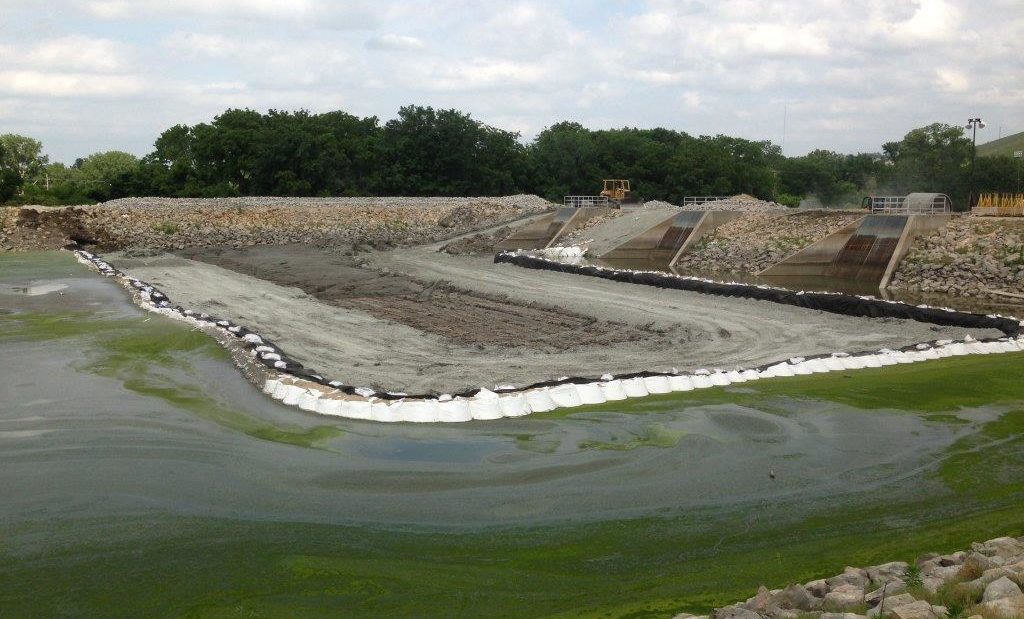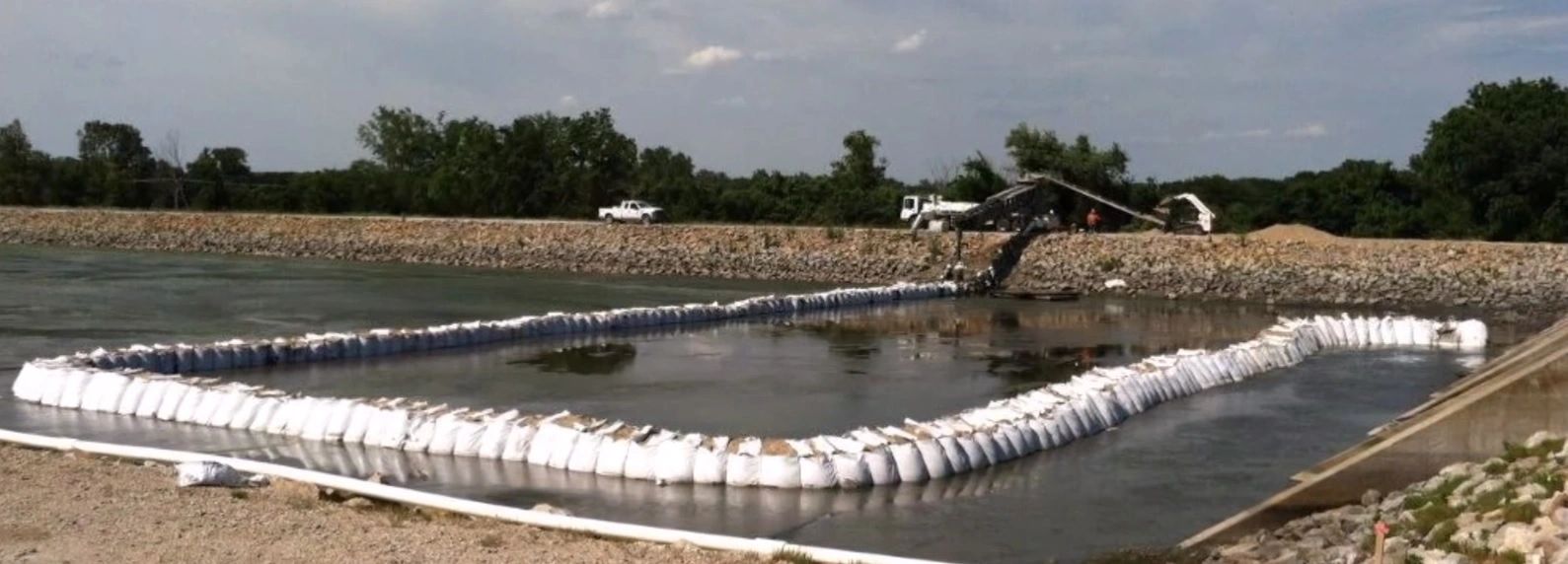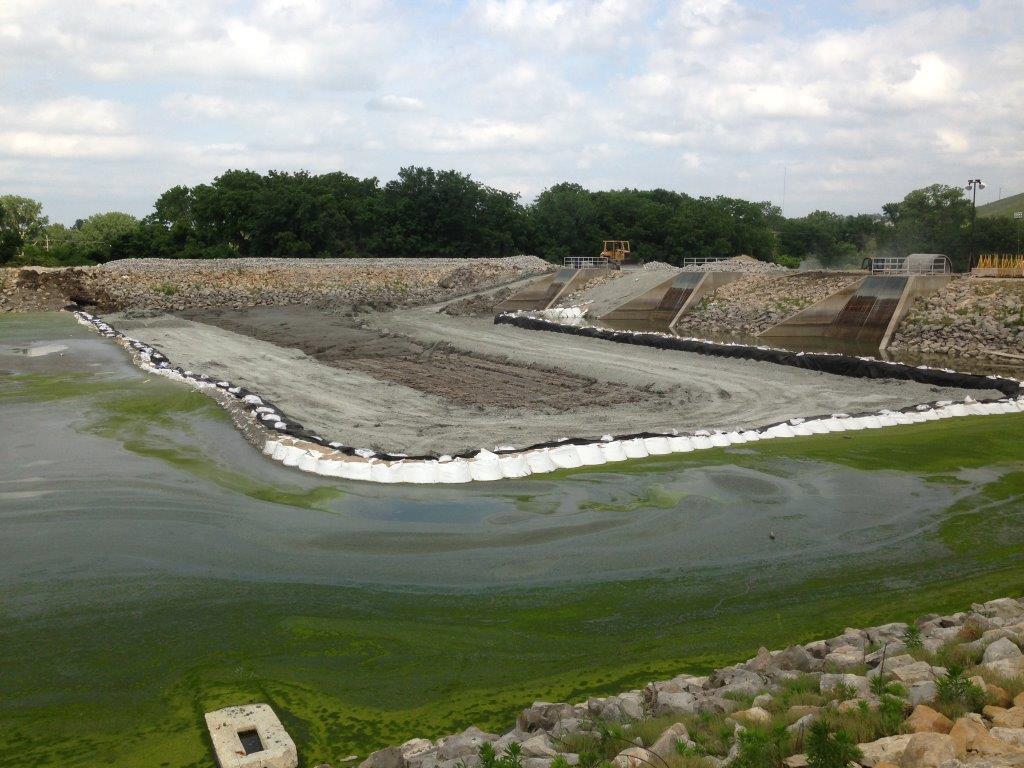It is relatively straightforward to build on the land and more difficult to build on water. Building in water is the toughest job only achievable with the cofferdam construction sequence in structural engineering.
This article is a thorough explanation of the purpose of cofferdams, their types, and their uses. We will also provide a step-wise guide on how to construct a cellular cofferdam.
What is a Cellular Cofferdam?
A cofferdam is a construction in a water body that holds water and soil in an enclosure so you can pump out water and excavate till the area is dry. The cofferdams are useful in creating structures within water bodies, especially bridge piers.
There are different types of cofferdams. The cellular cofferdam is just one of them. Other types include:
- Braced
- Earthen
- Rockfill
- Single-walled
- Double-walled cofferdams.
A cellular cofferdam is useful when the layer of water is over 20m. Most other types of cofferdams are not useful in such circumstances. Cellular cofferdams come in handy in the construction of weirs, dams, or locks.
The construction involves the use of straight web steel sheets in piles. First, these sheets are aligned and connected. Then, the interconnected cells are arranged in the desired size, shape, and style to suit the site requirement. To make the cells stable, you fill the sheets with sand, clay, gravel, or a combination.
There are two types of cellular cofferdams:
Diaphragm Type
Here, you arrange the sheets to form many arcs before connecting the segmental arcs with T-piles to create the desired diameter of the cofferdam. This type is cheaper to construct as it requires less quantity of sheets. However, it lacks the stability of the circular type as it can withstand lower lateral pressure. This is because there is a limit to the interlock tension between adjacent cells and the high heads are limited.
Cellular Type
The cellular type is more expensive and requires more technical know-how. It involves arranging the cells in a circular shape on the inside. The outer parts of the circle will then have diaphragm walls. Finally, a Y-element joins the circular parts with the diaphragm.
To reduce leakage and increase stability, you fill the empty spaces with clay or sand. You can easily increase the length of the cofferdam by adding to the diaphragm.
Uses of Cellular Cofferdams
Cellular cofferdams are water exclusion structures with wide useability. For example, they help const bridge footings or piers, locks, dams, and other in-water structures.
It can also serve as a temporary structure for hydroelectric power plants. Engineers are beginning to adapt cellular cofferdams for permanent hydroelectricity structures.
The purpose of a cofferdam is to provide a safe workspace for construction within and over water bodies. Cofferdams are expensive to construct, but you may re-use the same materials for other cellular cofferdam constructions.
Advantages of Cellular Cofferdams
Here are some advantages of a cellular cofferdam:
- Reduced Leakage: Cellular cofferdams are less likely to have leaks.
- Stability: with the reinforcement using gravel and soil, cellular cofferdams are relatively more stable.
- Good range: Cellular cofferdams are useful when the layer of water is over 20m, unlike some other types of cofferdams.
Design Factors to Consider When Constructing Cellular Cofferdams
Like with every other structural work, there are vital considerations before constructing a cellular cofferdam. In general, the design of a cofferdam should satisfy every one of these criteria:
- Must withstand all the loads it would carry.
- The walls of the cofferdam must not disturb the permanent construction or any nearby structures.
- The amount of water seeping into the cofferdam must be controllable by pumping it out.
- At all times, the formation level stability must be preserved and not prone to heaves, pipes, or boiling.
- Proof of overall stability and balance of earth pressure.
The design factors you should consider when constructing a cellular cofferdam are:
- The soil
- Excavation size/depth
- Water table
Cellular Cofferdam Construction
After considering the cofferdam design factors, we can now examine the construction process of each style of cellular cofferdam construction. Most of the steps are similar for either type. But we will also mention the differences.
How to Construct a Diaphragm Type Cellular Cofferdam
Step 1: Dredge the proposed area.
Step 2: Install temporary support sheet pile.
Step 3: Erect bracing frames to hold the piles in place.
Step 4: Drive steel sheet piles into the area.
Step 5: Pump out of the water within the cofferdam.
Step 6: Gradually set up internal bracing.
Step 7: Excavate the ditch for the leakage to go through.
Step 8: Fill with rocks to level and for support.
How to Construct a Cellular Cofferdam
The construction of a cellular type is similar to that of a diaphragm. A significant difference in the design and arrangement of the piles. The steel sheet piles are filled as one, unlike the diaphragm type, where you have to fill each cell one after the other.
TrapBag Cellular Cofferdams
Trapbag cellular cofferdam involves the use of pentagonal bags for filling. Each cell is aligned and connected to have a continuous wall with the adjacent cells, such that it looks like an accordion.
One point to note is how the cells consist of highly resilient textile material capable of surviving harsh conditions. For example, these cells collapse when not in use, such as in storage and during installation.
How TrapBag Cellular Cofferdams Work
TrapBags are available in two heights – 0.6m (60cm) or 1.2m (120cm). There is also the single-ply type and the double-ply type. The double-ply lasts longer than the single-ply. As with diaphragm type cellular cofferdams, each TrapBag cell is self-reliant. Hence, if there is a problem with a cell, the others remain in charge of securing the perimeter.
The original idea of TrapBag was to function as an easy-to-use flood prevention barrier. Thanks to many successes, it has protected the coast, mining, bridge abutment, and as cofferdams.
When used for coaster protection, fill the bag with sand. It efficiently replaces the use of traditional sandbags. Communities prone to relevant water problems can secure their coaster lines with TrapBags. Interestingly, TrapBags can be deployed within a day. This could be key to saving lives and preserving properties.
The Corps of Engineers of the US Army has been using TrapBags for many years for flood protection. Fewer TrapBags are required than for the less effective sandbags, which significantly reduces the labor requirement.
Trapbag cellular cofferdams do not require ground preparation before installing the structure. This ensures cost-effectiveness and less subsurface risk, as seen with steel sheets.
Advantages of TrapBag
Below are some advantages of a TrapBag cellular cofferdam:
- Budget-friendly Solution: Its compactness ensures easy transportation and storage. It also requires less waybill. Since it also requires much less labor, compared to the alternative, it saves money.
- Durable: TrapBags are long-lasting and could work effectively well for up to five years. Hence, it is applicable as a short-term or long-term barrier for erosion and flooding.
- One Serves All: TrapBag is a versatile solution to many problems and are easily diverted for other uses.
Use TrapBags for your Cofferdam Construction
When we talk about a versatile solution to many cofferdam problems, TrapBag comes to mind. Are you thinking about constructing a cellular cofferdam? Browse TrapBags perfect for your project contact TrapBag today for the best you can get!




